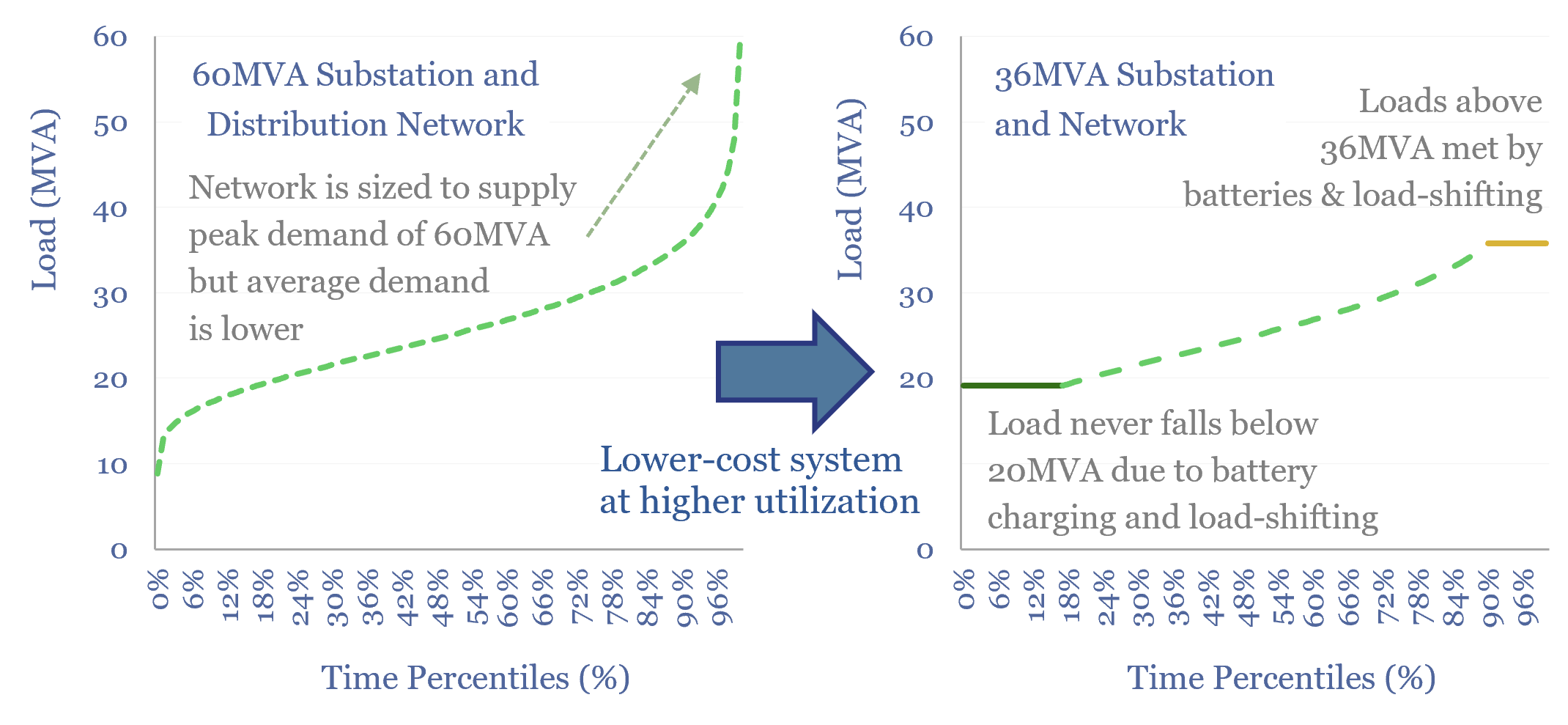Will persistent grid bottlenecks de-rail electricity growth? This 18-page report explores using batteries and smart energy systems to reduce the need for new power lines. This option can be surprisingly economical, when back-tested on real-world load profiles. Hence we are upgrading our battery outlook.
Global electricity demand is likely to treble from 30,000 TWH pa in 2023 to 90,000 TWH pa by 2050. More electricity demand correlates with more demand for T&D infrastructure. Numbers are re-capped on pages 2-5. Hence we have worried this could all require expanding the global transmission network by 3x and the distribution network by 5x in research notes like this one.
In this note we want to explore a way to mitigate the need to build so much new transmission and distribution infrastructure, by re-thinking the way that grids supply electricity. The mindset around grid-sizing has not really changed from the pre-digital and pre-battery world, as explained on pages 6-8.
If we narrow in upon the disaggregated, second-by-second load profile of a typical UK home with a 10kW grid connection, we can show that the same load profiles can feasibly be met with a 10kWh battery and a mere 2kW grid connection, on pages 9-11.
Batteries and smaller grid connections are also cheaper overall, based on the recent costs of batteries, and costs of distribution infrastructure, per pages 12-13. And the battery-supplemented distribution infrastructure is used more efficiently, at a 2x higher utilization rate, per page 14.
A combination of grid battery deployments and smart energy networks, augmented by AI, will likely complement each other. Examples are on pages 15-17.
Our key finding from reviewing household load data is that deploying batteries and smart energy systems in the distribution network can be lower cost – and much easier – than having to permit and construct new distribution lines to meet rising demand. Our forecasts for grid battery deployments and global grid capex are updated on page 18.
